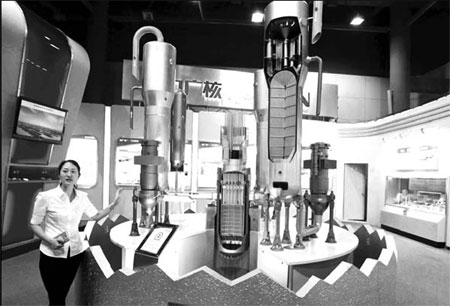China boosts its handling of nuclear emergencies
Updated: 2013-07-04 07:55
By Zhao Lei (China Daily)
|
||||||||
|
The exhibition hall of the Daya Bay nuclear power plant. Wang Jing / China Daily |
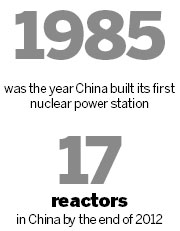
New plan sets four levels of response and steps for dealing with accidents
China has pledged to strengthen its capability to handle any possible nuclear emergencies, according to a plan approved by the State Council on Tuesday.
The national nuclear emergency plan, based on a previous edition issued in 2005, stipulates the structure and responsibilities of China's nuclear emergency response system.
It sets four levels of emergency response for possible incidents or accidents in civil nuclear stations and lists directions for dealing with accidents that may happen during the transportation of spent nuclear fuel or aerospace vehicles equipped with nuclear devices.
By the end of 2012, China, which began to build its first nuclear power station in 1985, had 17 reactors in operation and 28 more under construction. Nuclear power contributes 1.7 percent of China's electricity consumption, according to the China Atomic Energy Authority, which is in charge of coordinating interministerial efforts on nuclear emergency responses.
Compared with the 2005 edition, the new plan is "more practical and comprehensive in terms of technical preparation, personnel training, logistics and information exchange", said Xu Ping, deputy director of the nuclear emergency response and safety department at the authority.
He said the plan also sets clearer tasks and coordination mechanisms for government departments and companies when a crisis takes place, noting it regulates that accurate information must be published publicly in a timely and transparent manner once an incident or accident occurs.
Since China established its nuclear industry in the 1950s, the government has attached great importance to nuclear safety and emergency response, said Ma Xingrui, vice-minister of industry and information technology and head of the China Atomic Energy Authority.
In 1991, the State Council established a national committee to cope with any nuclear emergencies. Though a host of ministries and departments have been disbanded or merged during governmental structural reforms over the past two decades, the committee remains due to its importance.
"Since last year, President Xi Jinping, Premier Li Keqiang and other top leaders have requested related authorities and companies to enhance their readiness for any nuclear contingency so the safety of the nation's nuclear plants can be guaranteed," Ma said.
Thus far, 16 provinces, autonomous regions and municipalities have established nuclear emergency response committees.
The country's nuclear emergency response system has successfully addressed several incidents over the past five years, Ma said. He said Chinese professionals proved their ability through their handling of the negative impacts on China's nuclear power industry brought about by the devastating earthquake in Sichuan province in 2008 and the meltdown at the Fukushima Daiichi Nuclear Power Plant in Japan in 2011.
To improve China's capability of handling nuclear emergencies, Ma's administration has allocated nearly 1 billion yuan ($163 million) to found four national technical support centers and six emergency response and rescue units. He added the administration is also working on the constitution of a national nuclear emergency response and rescue team.
In 2009, China carried out its first national-level nuclear emergency response exercise. In addition, more than 300 drills were conducted by provincial authorities and station operators during the past several years.
Yao Bin, director of the nuclear emergency response and safety department at the authority, said ministries and departments have joined in forming a comprehensive and well-coordinated response framework.
"For instance, the Ministry of Environmental Protection has built a systematic nuclear and radioactive monitoring network and the National Health and Family Planning Commission has shaped a treatment system for acute radiation syndrome," he said.
Liu Senlin, associate president of the China Institute of Atomic Energy, said China has at least 60 nuclear and radioactive monitoring vehicles and boasts a full-scale, competent emergency detection system.
Moreover, the government is serious about the disposal of nuclear waste and is able to make sure that all waste generated by nuclear power plants can be properly and securely processed, according to Pan Ziqiang, director of the science and technology commission at the China National Nuclear Corp.
"China has two near-surface repositories where it disposes of low- and intermediate-level radioactive waste and will construct a third one in the near future," he said.
"The government has also introduced a disposal facility for high-level radioactive waste and is looking for a suitable location to establish an underground laboratory to further research high-level radioactive waste."
In response to concerns from the public on the safety of nuclear plants, Chai Guohan, chief engineer at the Ministry of Environmental Protection's nuclear and radiation safety center, said China has learned lessons from other countries' experience operating nuclear reactors and spares no effort to improve the safety of its nuclear industry.
He suggested the government raise the public awareness of the country's nuclear industry and its excellent safety record.
zhaolei@chinadaily.com.cn
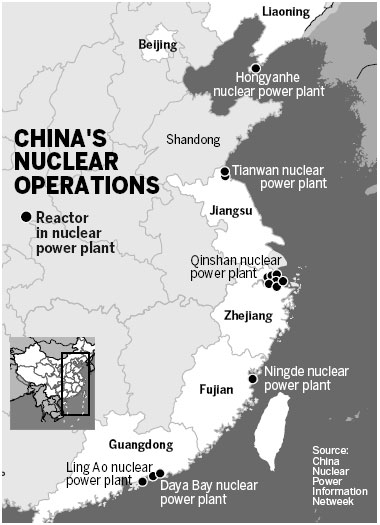
(China Daily USA 07/04/2013 page4)
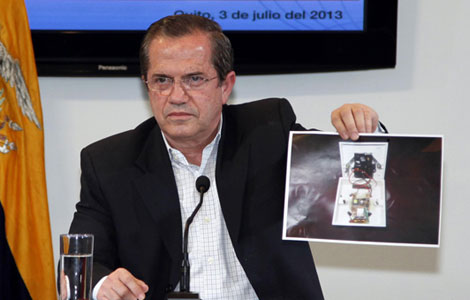
 Ecuador finds spy mic for Assange meeting
Ecuador finds spy mic for Assange meeting
 US martial artists arrive at Shaolin Temple
US martial artists arrive at Shaolin Temple
 July 4 in Prescott: Balance of grief, patriotism
July 4 in Prescott: Balance of grief, patriotism
 Jubilant crowds celebrate after Mursi overthrown
Jubilant crowds celebrate after Mursi overthrown
 Growth slowing for services
Growth slowing for services
 Venezuela eyed as Snowden seeks asylum
Venezuela eyed as Snowden seeks asylum
 Anti-terror drill staged in Xinjiang
Anti-terror drill staged in Xinjiang
 Memorial service held for 19 Arizona firefighters
Memorial service held for 19 Arizona firefighters
Most Viewed
Editor's Picks

|

|

|

|
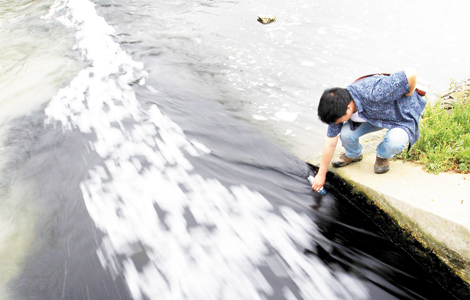
|

|
Today's Top News
US welcomes China's engagement in Africa
Data show shifts in US, China economies
Obama, Merkel agree talks on surveillance program
Filipino executed for drug trafficking
Obama orders US to review aid to Egypt
Snowden still in Moscow
China urges more efficient uses of fiscal funds
Egypt army topples president Morsi
US Weekly

|

|
